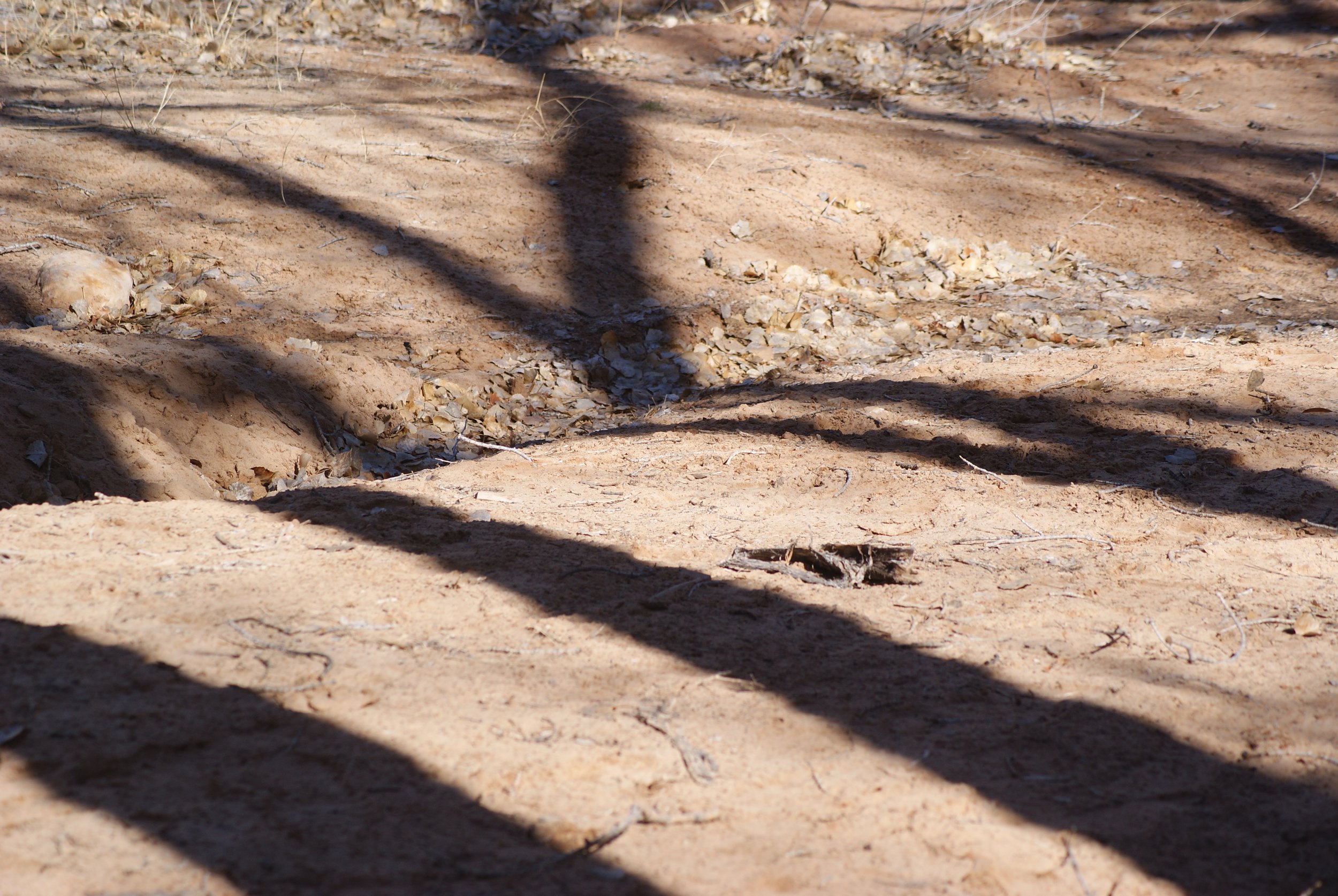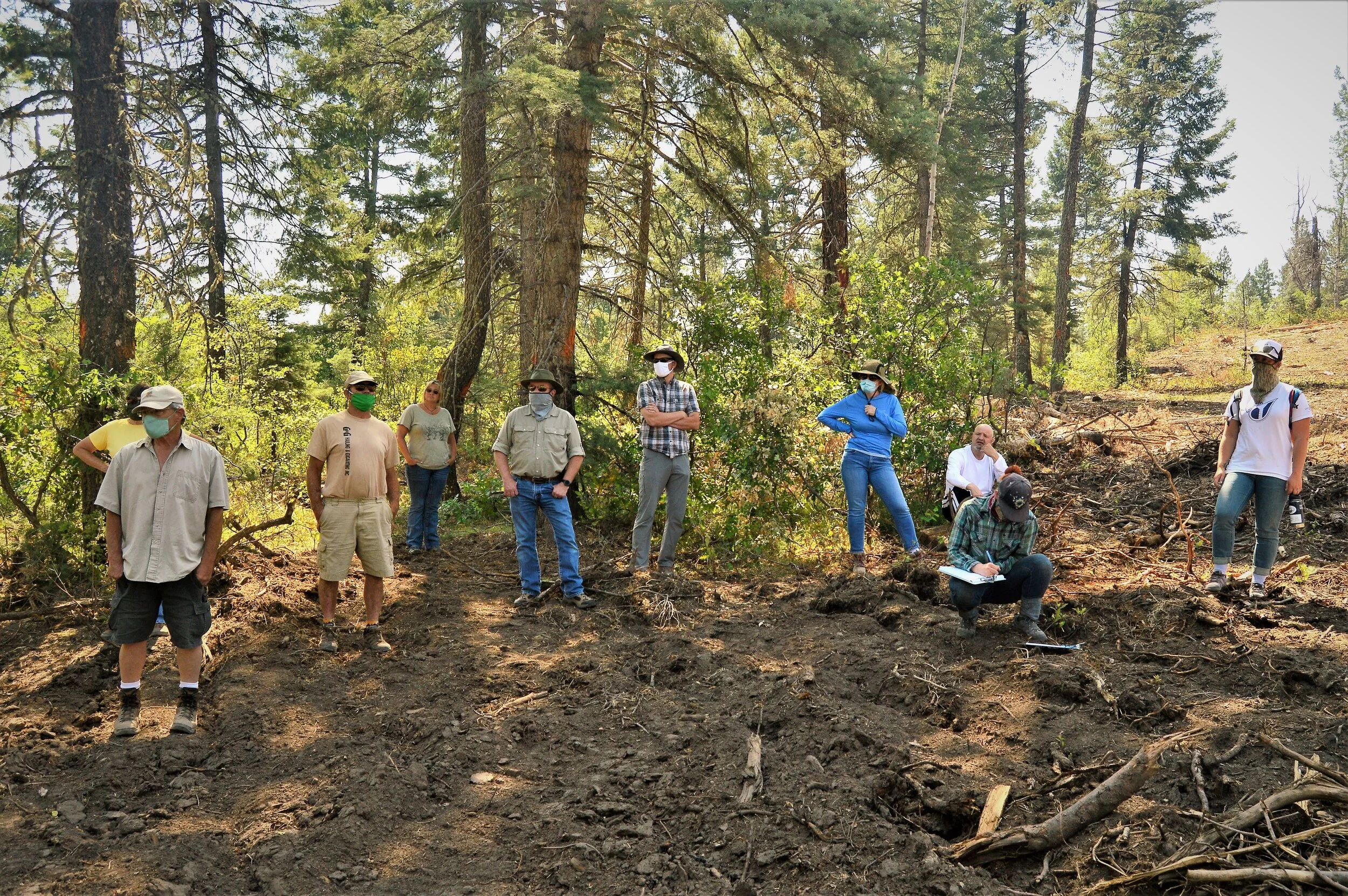Mountain Studies Institute (MSI), Sheep Mountain Alliance (SMA), and Telluride Institute’s Watershed Education Program (WEP) have started a citizen science wildlife monitoring program on the Telluride Valley Floor with permission from the Town of Telluride Open Space Commission.
Watershed Partnership Improves Safety and Access for Boaters
2020 Robert Blair Mountain Visionary Award
Mining Solutions Bootcamp and Networking Event
Mining Solutions Bootcamp: December 1-10th
Bootcamp Selects Startups to Pioneer Mining Solutions
Solving the West’s most pressing problems in water pollution and mining reclamation
Virtual Event, December 1-10, 2020: Mountain Studies Institute (MSI) and Telluride Venture Accelerator (TVA) are partnering with Newmont Corporation for a seven-day bootcamp catered towards startups focused on solving problems in water pollution and degraded mine lands, and innovative cleantech.
Tackling Russian Olive
MSI in the field with the San Juan Forest Health Partnership
416 Fire Turned out to be a Healthy Burn for the Forest
After wildfires decimated their town, this local nonprofit group helped a Colorado community heal through environmental stewardship
By Michael Pope
“It was like something out of an old John Ford Western: on the morning of June 1, 2018, a coal-fired locomotive slowly chugged its way through the picturesque San Juan National Forest in southwestern Colorado. The train was part of the Durango & Silverton Narrow Gauge Railroad, a national historic landmark and local tourist attraction that has run continuously between the two towns since 1881. As the engine thundered up Shalona Hill, its iconic smokestack belching fiery ash and black smoke, a few smoldering embers managed to escape its exhaust screen and land in the dry brush next to the tracks.
Just like that, the sixth-largest wildfire in Colorado history had begun.”
Familiar soil conditions help Pinus ponderosa seedlings cope with warming and drying climate
Our own Dr. Mike Remke appears as an author in a recent publication in the journal of Restoration Ecology on Ponderosa pine seedlings. Click HERE to read the article in full.
Monitoring the Animas River
Read about MSI and monitoring efforts on the Animas River, featured in the Environmental Monitor. Having already established a water quality monitoring program from the Gold King Mine spill in 2015, MSI is now able to conclusively assess the impacts of the 416 Fire.
In this featured article, MSI’s Water Programs Director and Aquatic Biologist, Scott Roberts, expands on MSI’s programs, including community and educational outreach. “We do on the ground environmental research, mine hydrology, water quality monitoring, and forest health monitoring, and try to distill and distribute that information to address specific concerns that arise in the community. One thing that differs, I think, in our research program is largely driven by concerns in the community, rather than our own kind of academic pursuits. It’s usually shaped by efforts to try to address questions that come about in the community.”
15 Stories for 15 Years Campaign Complete
In celebration of our 15th anniversary, we collected 15 stories from friends, family, and staff. Go here to read about the adventures we're gotten ourselves into, and join us to be part of the stories of the next 15 years!
Animas High School students learn about water quality in Silverton
2017 Forests to Faucets
The 2017 Forest to Faucet teacher workshop offered two days of hands-on place-based teacher training designed around the children's book My Water Comes from the San Juan Mountains! Participants spent time in the field with expert guest speakers, went on field visits to rivers, reservoirs, and water treatment plants, and learned new student activities using the My Water Comes from the San Juan Mountains book, teaching kit, and curriculum guide.
Traveling from headwaters to intake so that they could better understand the journey detailed in "My Water Comes from the San Juan Mountains", teachers started by examining macroinvertebrates in the Upper San Juan River to assess water quality.
Who participated? Fifteen teachers from seven schools (Dolores Elementary, Juniper School, Bayfield Elementary, Mesa View Middle, Montezuma-Cortez High School, Pagosa Springs Middle, Park Avenue Elementary) and two environmental programs (Audobon Rockies and Ute Mountain Ute Environmental Programs).
Here, teachers use an index to identify the macroinvertebrates they find. The knowledge they gained will help them to teach from the associated "Macroinvertebrate Mania" lesson plan.
Steve Hartvigsen shares a wealth of knowledge from his lifelong service with the USFS. This forest lecture focused on the relationship between forest health and water quality and quantity.
The Forests to Faucets Workshop offers hands-on, relevant activities that equip educators with up-to-date knowledge of local watershed science and provides them with engaging tools for bringing that knowledge back to their classroom.
Upon integration of the curriculum into their classrooms, it is estimated that these teachers will bring watershed science to an additional 300-450 students per year. Additionally, the workshop offers graduate credit (in the form of continuing education credit) from Fort Lewis College, helping to grow the credentials of our local teachers.
By offering this workshop to local educations, F2F build teachers’ capacity for teaching watershed science across the region by providing place-specific knowledge and activities that can easily be integrated in science, math, and social studies curricula.
This program would not be possible without the support of Alpine Bank, The Ballentine Foundation, The Community Foundation Serving Southwest Colorado.
If you're interested in signing up for future F2F workshops, contact amanda@mountainstudies.org.
From the Field: Laurel Sebastian, MSI Natural Resources Intern
Four weeks ago, I began this internship seeking experience in environmental education and field work. So far, I have gotten just that. In just the past two weeks, I have worked with over 40 students from 5 to 15 years old. The students' enthusiasm and curiosity has blown me away and made me even more excited for the programs that lie ahead.
Last week, Amanda Kuenzi and I guided 15 Boston middle-schoolers around Durango and Silverton. After students spent a day practicing macroinvertebrate sampling in Junction Creek, we designed an experiment to test the effects of pollution from cement creek on the macroinvertebrate community downstream. The students jumped in to the project with enthusiasm, quickly gaining an understanding of the complex interactions that oxygen, temperature, pH and particulates play in overall stream health.
During our final day with the group, we switched from aquatic to terrestrial ecology. Among the verdant slopes and raging waterfalls of Cunnigham Gulch, we documented signs and sightings of American Pika, a temperature-sensitive species that is considered one of the best early indicators of changing (warming) climates in the US. From there, we drove up South Mineral Creek Road, stopping at beaver dams to discuss the ecosystem services of wetlands. During our final hike up the Ice Lakes Trail, I was amazed to hear students point out Douglas fir and native flowers after they had spent only three days in an entirely new ecosystem.
Last week, we switched over to working with younger, local students at Silverton School. Every year, Mountain Studies Institute leads three days of Ecology Camp for the students. We spent our first day in the school garden. Kay Phelps, kicked off the camp with a discussion on seeds and their different mechanisms of dispersal, from dandelions that blow in the wind to grass seeds that stick to your socks. We also dissected lima beans and identified all the parts of a plant contained within the tiny seed coat. Next, students each chose a flower to examine and draw with a "scientist's eye and an artist's hand." After reviewing the life cycles and needs of plants, we dug into the soil and planted seeds. Each team tackled an area of the garden, planting radishes, kale, edible flowers, carrots, chard, peas, and more.
Our second day together was even more exciting than the first; the younger group, grades K-3, examined benthic macroinvertebrates with awe, exclaiming that they "never would have imagined there are so many little animals in the river!" The older students, grades 4-8, spent the afternoon in Cunningham Gulch learning about glacial geomorphology through sand sculptures with MK Gunn of San Juan Mountain Association. During our third and final day, the younger group focused on trees while the older ones got their own time with macroinvertebrates. The young kids were quick to figure out the stresses caused by overcrowded forests, droughts, and floods when we played "Every Tree for Itself." With both groups, we created a display town to explore watersheds and pollution. Each student had the chance to help build the town, identify pollution, create rain to wash the pollution downstream, and identify solutions to pollution.
Although I know I have so much more to learn about education, I'm amazed at how well everything has gone thus far. My initial fears of failing to teach the students feel far away now. One student even asked, "how do you come up with so many creative, fun activities for us?" I am grateful to have had the expertise of Amanda, Kay and MK as we planned and implemented the lessons for the last two weeks. I'm hopeful the next seven weeks will be as impactful and rewarding as the first four.
Conference Offers Insight Into Future of Mining
Photo: Priscilla Sherman
"In a region of the state where mining legacy is big business—both as an active industry and as an offshoot of tourism—it is not surprising that more than 150 people attended the seventh annual San Juan Mining Conference in Ouray last week..."
Read the full article from the Ouray County Plain Dealer.
The Durango Telegraph: Ready to Run
Children’s book series and associated curricula support elementary education and outreach in water resources
MSI's Executive Director, Marcie D. Bidwell appears as an author in a peer-reviewed publication released in July 2015. Click below to read the full peer-reviewed publication.
Citation:
C. Ray, D.M. McKnight, M.D. Bidwell, T. Fourment, C. Flanagan Pritz & A.H. Rinehart (2015): Children’s book series and associated curricula support elementary education and outreach in water resources, Plant Ecology & Diversity, DOI: 10.1080/17550874.2015.1050711


























